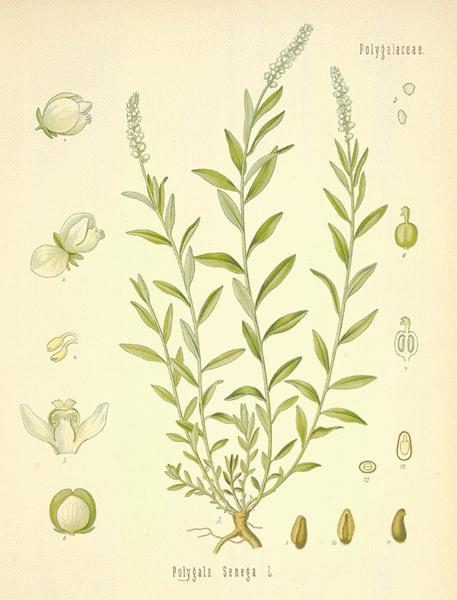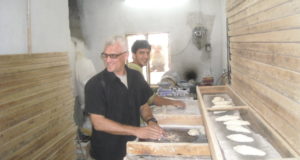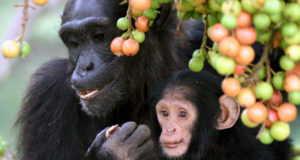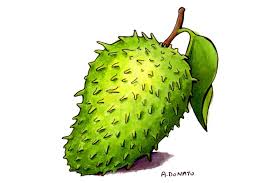There are few medical recommendations which can be safely recommended for children. Alongside of including a physician or pediatrician’s consult it is up to the parent’s discretion to determine what they can do for an ill child. For the majority of illnesses, parents wait until significant signs of distress such as dehydration, difficulty breathing, rash, injury or high fever alert them to seek professional medical care.
Although not a replacement for professional medical assessment, there are herbal and homeopathic aids to ease a child’s normal, periodic cold or flu-like syndromes. By normal, it is expected that a child may have illnesses while they develop their immune system. A;so, it is not advised from a naturopathic or integrative medical approach to attack a child’s symptoms with symptomatic medications and antibiotics as this hinders their immuno-competence (natural ability to respond to symptom-causing microbes).
Although I remain skeptical about homeopathy and its possibility of prolonging the time between symptom presentation and the necessary visit to standard medical care, If you are inclined to try home remedies while your child is not in danger (as outlined by your physician), here are a few suggestions:
- Senega (Senega oficialis) – expectorant
- Belladonna (Atropa belladonna) – Sore throat, congestion
- Laurocerasus (Prunus laurocerasus) – cough
- Drosera (Drosera rotundifolia) – cough
- Rumex (Rumex crispus) – cough
- Verbascum of Mullein (Verbascum thapsus) – bronchodilator, expectorant, cough
- Pelargonium (Pelargonium sidoides) – expectorant, congestion, cough
See Below for details on all the above recommendations
Senega oficinalis
This perennial herb, about a foot high, grows throughout central and western North America, in woods, and on dry, rocky soil. The leaves are small alternate, and narrowly lanceolate, and the numerous, small pinky-white flowers are crowded on to a narrow, terminal spike from 1 to 2 inches long.
The name of the genus, Polygala, means ‘much milk,’ alluding to its own profuse secretions and their effects. ‘Senega’ is derived from the Seneca tribe of North American Indians, among whom the plant was used as a remedy for snake-bites.
About 1735, Dr. John Tennent, a Scottish physician living in Pennsylvania, was introduced to the use of the root by the Seneca Indians for curing rattlesnake-bite. As the symptoms were similar to those of pleurisy and the latter stages of pleuropneumonia, he experimented with it in those diseases with success, and as a result the drug was accepted in Europe and cultivated in England in 1739.
Constituents –The root contains polygalic acid, virgineic acid, pectic and tannic acids, yellow, bitter, colouring matter, cerin fixed oil, gum, albumen, woody fibre, salts, alumina, silica, magnesia and iron. The powder is yellowish-grey to light yellowishbrown.
The active principle, contained in the bark, is Senegin (which some authorities regard as another name for polygalic acid) which can be toxic but in very low doses is considered homeopathic.
Medicinal Action and Uses –A stimulating expectorant, diuretic and diaphoretic. The Ancients regarded its action as identical with that of ipecacuanha, but in doses of three times the strength. It should be used when the power to expectorate is small – very useful in the second stage of acute bronchial catarrh or pneumonia. It is of little value when the expectoration is tough and scanty, but very helpful in chronic pneumonia or bronchitis or dropsy dependent on renal disease. Spirit of chloroform will lessen its disagreeable taste. It has been used also in croup, whooping-cough, and rheumatism.
As it stimulates most of the secretions, it is also useful as a sialagogue and emmenagogue. In active inflammation its use is contraindicated.
In large doses it is emetic and cathartic.
Dosages – take care to identify appropriate doses for weight and age of patient.
Poisons and Antidotes –In overdose it can act as an irritant or general protoplasmic poison, with violent vomiting and purging. A dose of from 10 minims of the tincture to a scruple of the powdered root will cause heaviness and vertigo, dazzling vision, sneezing, inflammation of the oesophagus, with constriction, thirst, nausea, mucous vomiting, colic, scalding, frothy urine, irritation of the larynx, and general debility. Like saponin, it causes a paresis of the muscles of the respiratory tract and the vaso-motor system in general, resulting in capillary congestions followed by rapid exosmosis. Consider digitalis.
Adulterations and Other Species – Panax quinquefolium, or American Ginseng Root, is the most common admixture. It is larger and has no ridge.
Various species of Gillenia, Asclepias Vincetoxicum, or Swallow-wort, Triosteum perfoliatum, and the rhizome of Cypripedium pubescens have also been found in parcels. They have a different taste and odour, and show no ridge.
P. Boykinii or P. Alba resemble P. Senega, but have no ridge and are much less acrid.
Arnica, Valerian, Serpentary and Green Hellebore roots resemble it, but have no keel.
Belladonna
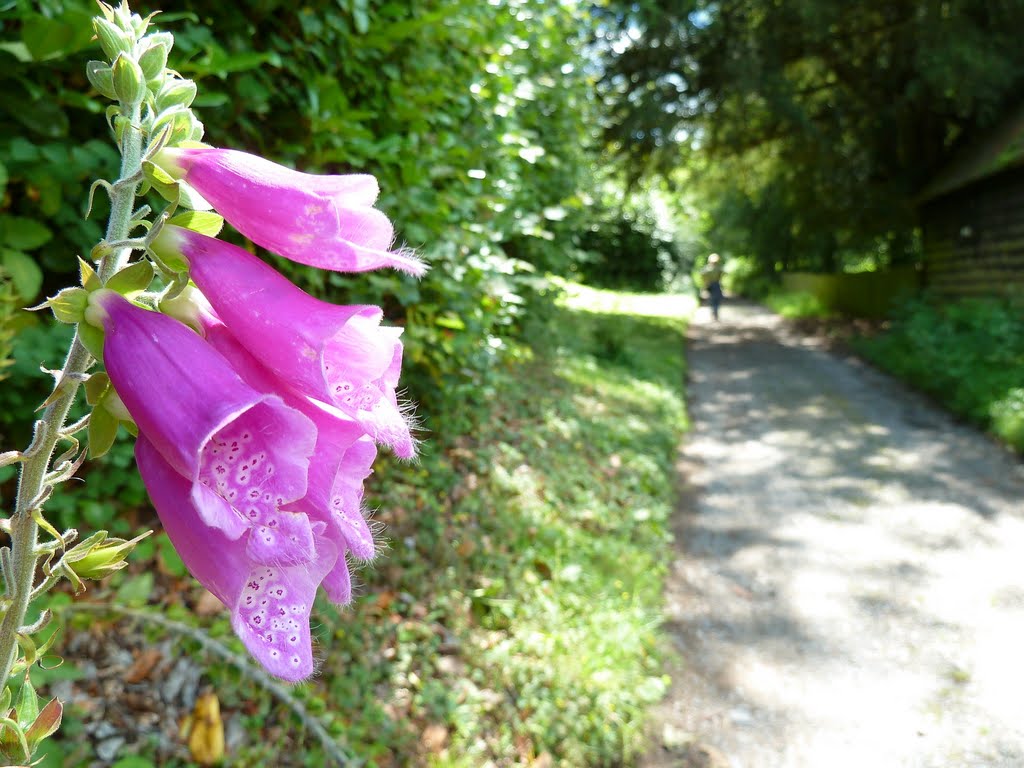 Under the shade of trees, on wooded hills, on chalk or limestone, it will grow most luxuriantly, forming bushy plants several feet high, but specimens growing in places exposed to the sun are apt to be dwarfed, consequently it rarely attains such a large size when cultivated in the open, and is more subject to the attacks of insects than when growing wild under natural conditions.
Under the shade of trees, on wooded hills, on chalk or limestone, it will grow most luxuriantly, forming bushy plants several feet high, but specimens growing in places exposed to the sun are apt to be dwarfed, consequently it rarely attains such a large size when cultivated in the open, and is more subject to the attacks of insects than when growing wild under natural conditions.
Description –It is perennial with the root is thick, fleshy and whitish. The purplish coloured stem is annual and herbaceous with stout, 2 to 4 feet high, undivided base, but dividing a little above the ground into three branches, each of which again branches freely with dull, darkish green leaves. Young stems are hairy. The fresh plant, when crushed, exhales a disagreeable odour, almost disappearing on drying, and the leaves have a bitter taste, when both fresh and dry. The flowers, which appear in June and July, singly, in the axils of the leaves, and continue blooming until early September, are of a dark and dingy purplish colour, tinged with green, large (about an inch long), pendent, bell-shaped, furrowed, the corolla with five large teeth or lobes, slightly reflexed. The five-cleft calyx spreads round the base of the smooth berry, which ripens in September, when it acquires a shining black color and is in size like a small cherry. It contains several seeds. The berries are full of a dark, inky juice, and are intensely sweet, and their attraction to children on that account, has from their poisonous properties, been attended with fatal results. Access to the plant has resultd in deathon numerous occasions and children strictly forbidden where it is grown. The plant has been forbidden to be grown where children can pick its berries or collect its flowers.
It is said that when taken by accident, the poisonous effects of Belladonna berries may be prevented by swallowing as soon as possible an emetic, such as a large glass of warm vinegar or mustard and water. In undoubted cases of this poisoning, emetics and the stomach-pump are resorted to at once, followed by a dose of magnesia, stimulants and strong coffee, the patient being kept very warm and artificial respiration being applied if necessary. A peculiar symptom in those poisoned by Belladonna is the complete loss of voice, together with frequent bending forward of the trunk and continual movements of the hands and fingers, the pupils of the eye becoming much dilated.
History—The plant in Chaucer’s days was known as Dwale, which Dr. J. A. H. Murray considers was probably derived from the Scandinavian dool, meaning delay or sleep. Other authorities have derived the word from the French deuil (grief), a reference to its fatal properties.
Its deadly character is due to the presence of an alkaloid, Atropine, 1/10 grain of which swallowed by a man has occasioned symptoms of poisoning. As every part of the plant is extremely poisonous, neither leaves, berries, nor root should be handled if there are any cuts or abrasions on the hands. The root is the most poisonous, the leaves and flowers less so, and the berries, except to children, least of all. It is said that an adult may eat two or three berries without injury, but dangerous symptoms appear if more are taken, and it is wiser not to attempt the experiment. Though so powerful in its action on the human body, the plant seems to affect some of the lower animals but little. Eight pounds of the herb are said to have been eaten by a horse without causing any injury, and an ass swallowed 1 lb. of the ripe berries without any bad results following. Rabbits, sheep, goats and swine eat the leaves with impunity, and birds often eat the seeds without any apparent effect, but cats and dogs are very susceptible to the poison.
According to old legends, the plant belongs to the devil who goes about trimming and tending it in his leisure, and can only be diverted from its care on one night in the year, that is on Walpurgis, when he is preparing for the witches’ sabbath. The apples of Sodom are held to be related to this plant, and the name Belladonna is said to record an old superstition that at certain times it takes the form of an enchantress of exceeding loveliness, whom it is dangerous to look upon, though a more generally accepted view is that the name was bestowed on it because its juice was used by the Italian ladies to give their eyes greater brilliancy, the smallest quantity having the effect of dilating the pupils o
Before the War, the bulk of the world’s supply of Belladonna was derived from plants growing wild on waste, stony places in Southern Europe. The industry was an important one in Croatia and Slavonia in South Hungary, the chief centre for foreign Belladonna, the annual crop in those provinces having been estimated at 60 to 100 tons of dry leaves and 150 to 200 tons of dry root. In 1908 the largest exporter in Slavonia is said to have sent out 29,880 lb. of dry Belladonna root.
The Balkan War of 1912-13 interrupted the continuity of Belladonna exports from South Hungary. Stocks of roots and leaves made shorter supplies last out until 1914, when prices rose, owing to increasing scarcity roots which realized 45s. per cwt. in January, 1914, selling for 65s. in June, 1914. With the outbreak of the Great War and the consequent entire stoppage of supplies, the price immediately rose to 100s. per cwt., and soon after, from 300s. to 480s. per cwt. or more. The dried leaves, from abroad, which in normal times sold at 45s. to 50s. per cwt., rose to 250s. to 350s. or more, per cwt. In August, 1916, the drug Atropine derived from the plant had risen from 10s. 6d. per oz. before the War to L. 7 (pounds sterling) per OZ.
—Constituents—The medicinal properties of Belladonna depend on the presence of Hyoscyamine and Atropine. The root is the basis of the principal preparations of Belladonna.
The total alkaloid present in the root varies between 0.4 and 0.6 per cent, but as much as 1 per cent has been found, consisting of Hyoscyamine and its isomer Atropine, 0.1 to 0.6 per cent; Belladonnine and occasionally, Atropamine. Starch and Atrosin, a red colouring principle, are also present in the root. Scopolamine (hyoscine) is also found in traces, as is a fluorescent principle similar to that found in horse-chestnut bark and widely distributed through the natural order Solanaceae. The greater portion of the alkaloidal matter consists of Hyoscyamine, and it is possible that any Atropine found is produced during extraction.
The amount of alkaloids present in the leaves varies somewhat in wild or cultivated plants, and according to the methods of drying and storing adopted, as well as on the conditions of growth, soil, weather, etc.
The proportion of the total alkaloid present in the dried leaves varies from 0.3 to 0.7per cent. The greater proportion consists of Hyoscyamine, the Atropine being produced during extraction, as in the root. Belladonnine and Apoatropine may also be formed during extraction from the drug. The leaves contain also a trace of Scopolamine, Atrosin and starch.
The British Pharmacopoeia directs that the leaves should not contain less than 0.3 per cent of alkaloids and the root not less than 0.45 per cent.
A standardized liquid extract is prepared, from which the official plaster, alcoholic extract, liniment, suppository, tincture and ointment are made. The green extract is prepared from the fresh leaves.
Medicinal Action and Uses – Narcotic, diuretic, sedative, antispasmodic, mydriatic. 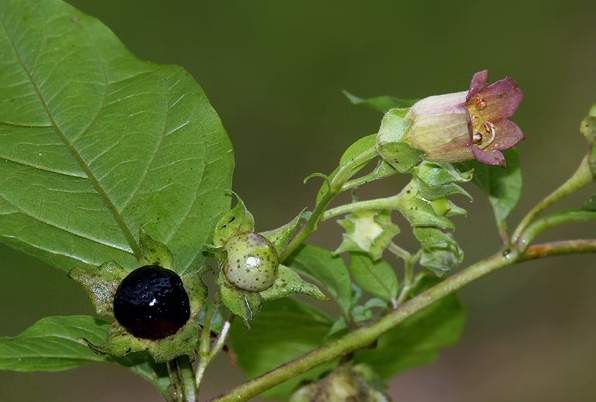 It is of value in acute sore throat, and relieves local inflammation and congestion. It is a powerful antispasmodic in intestinal colic and spasmodic asthma. It is used in children in large doses for whooping cough and false croup. Belladonna is a most valuable plant in the treatment of eye diseases, Atropine, obtained during extraction, being its most important constituent on account of its power of dilating the pupil. Scarcely any operation on the eye can safely be performed without the aid of this valuable drug.
It is of value in acute sore throat, and relieves local inflammation and congestion. It is a powerful antispasmodic in intestinal colic and spasmodic asthma. It is used in children in large doses for whooping cough and false croup. Belladonna is a most valuable plant in the treatment of eye diseases, Atropine, obtained during extraction, being its most important constituent on account of its power of dilating the pupil. Scarcely any operation on the eye can safely be performed without the aid of this valuable drug.
It is a strong poison, the amount given internally being very minute, 1/200 to 1/100 grain. As an antidote to Opium, Atropine may be injected subcutaneously, and it has also been used by the military for poisoning by nerve agents.
The various preparations of Belladonna have many uses. Locally applied, it lessens irritability and pain, and is used as a lotion, plaster or liniment in cases of neuralgia, gout, rheumatism and sciatica. As a drug, it specially affects the brain and the bladder. It is used to check excessive secretions and to allay inflammation and to check the sweating of phthisis and other exhausting diseases.
Small doses allay cardiac palpitation, and the plaster is applied to the cardiac region for the same purpose, removing pain and distress.
For its action on the circulation, it is given in the collapse of pneumonia, typhoid fever and other acute diseases. It increases the rate of the heart by some 20 to 40 beats per minute, without diminishing its force.
Hahnemann proved that tincture of Belladonna given in very small doses will protect from the infection of scarlet fever, and at one time Belladonnna leaves were held to be curative of cancer, when applied externally as a poultice, either fresh or dried and powdered.
Belladonna plasters are often applied, after a fall, to the injured or sprained part. A mixture of Belladonna plaster, Salicylic acid and Lead plaster is recommended as an application for corns and bunions.
Preparations and Dosages – It is a very useful homeopathic agent causing significant metabolic response to flu-like symptoms however, any preparation for its use must be in accordance with founded therapeutic dosages – homeopathic therapies are not formulated within FDA safety regulations.
Laurocerasus
Prunus laurocerasus, the Cherry Laurel, is a small evergreen tree indigenous to the eastern Balkans. Introduced as a cultivated ornamental shrub in northern and western Europe in the late 16th century, its native range is confined to present-day Bulgaria. This member of the family Rosaceae bears close physical resemblance to the botanically-related cherries and plums, and is closely taxonomically related to Crataegus (hawthorn), another remedy with decided action on the heart.
The flowers appear from April into June, and the enticing, but inedible, purplish-red to black cherry-like fruits ripen in July.
Aqua Laurocerasi (Cherry-laurel water) was traditionally used in the Balkans, and later more extensively in Europe, as a specific medicine for asthma, coughs, indigestion, and dyspepsia. The British Pharmacopoeia circa 1930 described its preparation as follows: “1 lb of fresh leaves of cherry-laurel, 2 1/2 pints of water. Chop the leaves, crush them in a mortar, and macerate them in the water for 24 hours; then distill 1 pint of liquid; shake the product, filter through paper, and preserve it in a stoppered bottle.”
 This preparation is rich in hydrocyanic acid, a substance also appearing in our homeopathic materia medica. It was the opinion of Richard Hughes that there is no useful distinction between the remedies Hydrocyanic acid and Laurocerasus, although J.H. Clarke remarked about Laurocerasus that “the provings bring out more delicate shades of action and fully entitle the remedy to an individual place of its own.”
This preparation is rich in hydrocyanic acid, a substance also appearing in our homeopathic materia medica. It was the opinion of Richard Hughes that there is no useful distinction between the remedies Hydrocyanic acid and Laurocerasus, although J.H. Clarke remarked about Laurocerasus that “the provings bring out more delicate shades of action and fully entitle the remedy to an individual place of its own.”
The first proving of Laurocerasus, in the form of Aqua Laurocerasi (prover references 1–12 in Allen’s Encyclopedia), was performed by Julian Christian Gottfried Jorg, using a provers’ company consisting of 21 students, his 2 sons, 3 women, and himself. Jorg was a professor of medicine at the University in Leipzig during Hahnemann’s sojourn at that institution, and set out on a series of drug provings with the avowed design of refuting Hahnemann’s theory of cure by similars. The first volume of Jorg’s provings was published in 1825. Although Jorg intended his provings to guide treatment according to contraria contraries, this first set of well-performed and documented provings to appear after those of Hahnemann’s Leipzig Provers’ group was enthusiastically embraced by the early homeopaths and has stood the test of time.
The provings of Laurocerasus bear out its traditional indication in treating coughs. Cyrus Boger’s Boenninghausen’s Characteristics describes the characteristic cough symptoms as: “Short, dry, hacking cough, excited by tickling in throat. With copious expectoration of gelatinous mucus dotted with blood. Frequently recurring, whistling, spasmodic, single cough, excited by tickling in larynx and trachea, as if they were dry. Worse sitting up; cold; Better lying with head low; open air.”
A strong guiding indication in the cough and dyspnea of Laurocerasus is aggravation in the sitting position. P.S. Kamthan, in Specific Remedies for Respiratory, Cardiac and Urinary Diseases, relates: “Whenever asthmatic trouble is aggravated on sitting up and better on lying down, Laur. rarely fails.”
Laurocerasus is an invaluable remedy in the midwife’s kit-bag for asphyxia of newborn infants with gasping for breath and coldness of the body (compare Carbo vegetabilis, Camphora, Antimonium tartaricum). Dr. E. Fornias of Philadelphia, PA, wrote in the Homeopathic Recorder, 26(7), 1911: “Laurocerasus is another useful remedy in the asphyxia of the new-born, especially when there is great blueness of the face with twitching of its muscles and gasping without really breathing.” A keynote here is “lack of reaction, especially in chest and heart affections” (William Boericke).
Laurocerasus has important specificity of seat in organic heart disease, particularly in cough and dyspnea related to disease of the valves, including rheumatic mitral regurgitation and insufficiency. Guiding keynotes include clutching at heart and palpitation, gasping for breath with constriction of the chest, and the previously-mentioned aggravation in the sitting position. These are seen elegantly in the following case, taken from the lectures of Henry Noah Martin, MD, at the Hahnemann Medical College:
A boy with heart disease
Sept. 14, 1867. Gentlemen: This little boy, aged thirteen, tells us he had rheumatism during the past winter, which was mostly confined to the lower extremities; that he was treated with external applications. We now find him with disease of the heart as the result of such treatment.
He says he has cough mostly after midnight; can scarcely sleep, because of difficulty of breathing. Sitting posture causes gasping for breath, great fluttering and beating at the heart.
We might, from these symptoms, reasonably suspect a disease of the heart; and upon a physical examination of the chest we find, by percussion, considerable enlargement of the organ, and by auscultation we find the murmur most prominent near the apex of the heart, with sound of regurgitation, and insufficiency of the mitral valves. There is a very sharp beat of the second sound of the pulmonary artery.
Our diagnosis in this case is, insufficiency of the mitral valves, with hypertrophy of the heart. The dyspnea which this patient experiences we might expect from the character of the disease. We find, also, some objective symptoms which we might have reason to expect. Here is the dropsical condition frequently found in this disease. His legs are largely swollen, his face also shows signs of dropsical effusion. He also has that peculiar look of the eye common in this disease. The eye-ball seems prominent and full, staring, more difficult to describe to you than to point out for your own observation.
Plain language summary
Umckaloabo is a herbal extract derived from the plantPelargonium sidoides (P. sidoides) and is available in both tablet and liquid forms. The extract is used for the treatment of acute respiratory tract infections (ARIs) where antibiotic use is unnecessary. In the light of inappropriate antibiotic use and increasing drug resistance rates worldwide, the need for an alternative, effective remedy for these medical conditions is crucial. On the other hand, there are concerns as to the safety of Umckaloabo.
We reviewed 10 randomized clinical trials of which eight were of sufficient quality for inclusion into the analyses. Three trials dealt with acute bronchitis in adults and showed inconsistent but overall positive results for resolution of symptoms (all symptoms, cough and sputum production). For acute bronchitis in children, there were also three studies showing an inconsistent but overall positive combined effect. The available data indicate that the tablet form may be less effective compared to the alcoholic extract. However, the number of trials is not sufficient to prove this. One study each was available for the treatment of acute sinusitis and the common cold in adults. Both showed that the drug was effective in resolving all symptoms including headaches and nasal discharge when taken for an extended time period. Adverse events were more common with P. sidoides, but none were severe.
Overall we considered the quality of the evidence low or very low for all major outcomes as there were few studies per disease entity, and all were from the same investigator (the manufacturer) and performed in the same region (Ukraine and Russia). Thus, in summary, there is limited evidence for the effectiveness of P. sidoides in the treatment of ARIs. The evidence is up to date as of April 2013.
Abstract
Objectives: To assess the efficacy and safety of P. sidoides for the treatment of ARIs in children and adults.
Search methods: In April 2013 we searched MEDLINE, Journals@Ovid, The Cochrane Library, Biosis Previews, Web of Science, CINAHL, CCMed, XToxline, Global Health, AMED, Derwent Drug File and Backfile, IPA, ISTPB + ISTP/ISSHP, EMBASE, Cambase, LILACS, PubMed component “Supplied by Publisher”, TRIPdatabase, the publisher databases: Deutsches Ärzteblatt, Thieme, Springer, ScienceDirect from Elsevier. We conducted a cited reference search (forward) in Web of Science of relevant papers for inclusion. In addition we searched the study registries ClinicalTrials.gov, Deutsches Register klinischer Studien DRKS (German Clinical Trials Register), International Clinical Trials Registry Platform (ICTRP) – WHO ICTRP, Current Controlled Trials and EU Clinical Trials Register.
Selection criteria: Double‐blind, randomized controlled trials (RCTs) examining the efficacy of P. sidoides preparations in ARIs compared to placebo or any other treatment. Complete resolution of all symptoms was defined as the primary outcome; in addition, we examined resolution of predefined key symptoms.
Data collection and analysis: At least two review authors (AT, JG, WK) independently extracted and quality scored the data. We performed separate analyses by age group and disease entity. Subanalysis considered type of preparation (liquid, tablets). We examined heterogeneity using the I2 statistic. We calculated pooled risk ratios (RR) using a fixed‐effect model if heterogeneity was absent (I2 < 5%; P > 0.1), or a random‐effects model in the presence of heterogeneity. If heterogeneity was substantial (I2 > 50%; P < 0.10), a pooled effect was not calculated.
Main results: Of 10 eligible studies eight were included in the analyses; two were of insufficient quality. Three trials (746 patients, low quality of evidence) of efficacy in acute bronchitis in adults showed effectiveness for most outcomes in the liquid preparation but not for tablets. Three other trials (819 children, low quality of evidence) showed similar results for acute bronchitis in children. For both meta‐analyses, we did not pool subtotals due to relevant heterogeneity induced by type of preparation.
One study in patients with sinusitis (n = 103 adults, very low quality of evidence) showed significant treatment effects (complete resolution at day 21; RR 0.43, 95% confidence interval (CI) 0.30 to 0.62). One study in the common cold demonstrated efficacy after 10 days, but not five days (very low quality of evidence). We rated the study quality as moderate for all studies (unvalidated outcome assessment, minor attrition problems, investigator‐initiated trials only). Based on the funnel plot there was suspicion of publication bias.
There were no valid data for the treatment of other acute respiratory tract infections. Adverse events were more common with P. sidoides, but none were serious.
-
Editorial Group: Cochrane Acute Respiratory Infections Group.
-
Publication status: New search for studies and content updated (no change to conclusions).
Citation: Timmer A, Günther J, Motschall E, Rücker G, Antes G, Kern WV. Pelargonium sidoides extract for treating acute respiratory tract infections. Cochrane Database of Systematic Reviews 2013, Issue 10. Art. No.: CD006323. DOI: 10.1002/14651858.CD006323.pub3. Link to Cochrane Library. [PubMed]
 Vitamin Agent The Health & Naturalistic Source
Vitamin Agent The Health & Naturalistic Source

